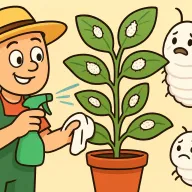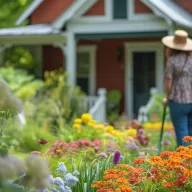
How to take care of your houseplants in hot weather?
Article for :All parent plants
It's summer. The mercury is over 40°, day and night. To cool off, you're chasing ice creams, slushies and visits to the frozen food store. But you're not the only one suffering from the heatwave. Your Aglaonema commutatum and your Lyre fig are also on the verge of heatstroke. Don't panic, we'll tell you how to look after your houseplants in hot weather.
How do I know if my plant is too hot?
Most of the varieties we grow indoors are tropical plants. They can handle heat better than cold. But when the mercury climbs above 28, they can suffer. Like us, plants perspire. When it's hot, they release their water content and can become dehydrated. What's more, the water contained in the substrate evaporates more quickly, and plants have less time to assimilate it.
Lack of water and heat cause your plant to wither and lose its shine. Leaves turn yellow and fall off. Another sure sign is that the soil dries out and cracks.
Some species resist better than others. Cacti and succulents are used to heatwaves and drought. Your Sansevieria spaghetti, Haworthiopsis attenuata and Gasteria acinacifolia can get through a heat wave lasting several weeks without any particular maintenance.
The ordeal is more complicated for plants that live in tropical forests. Begonia, Maranta and Monstera grow in the shade of tall trees, sometimes at altitude. They are less tolerant of dry air and high temperatures. If you grow them indoors, you need to be careful.
How can I protect my houseplants from the heat?
There are just a few simple things you can do to look after your houseplants in hot weather.
- Keep plants cool
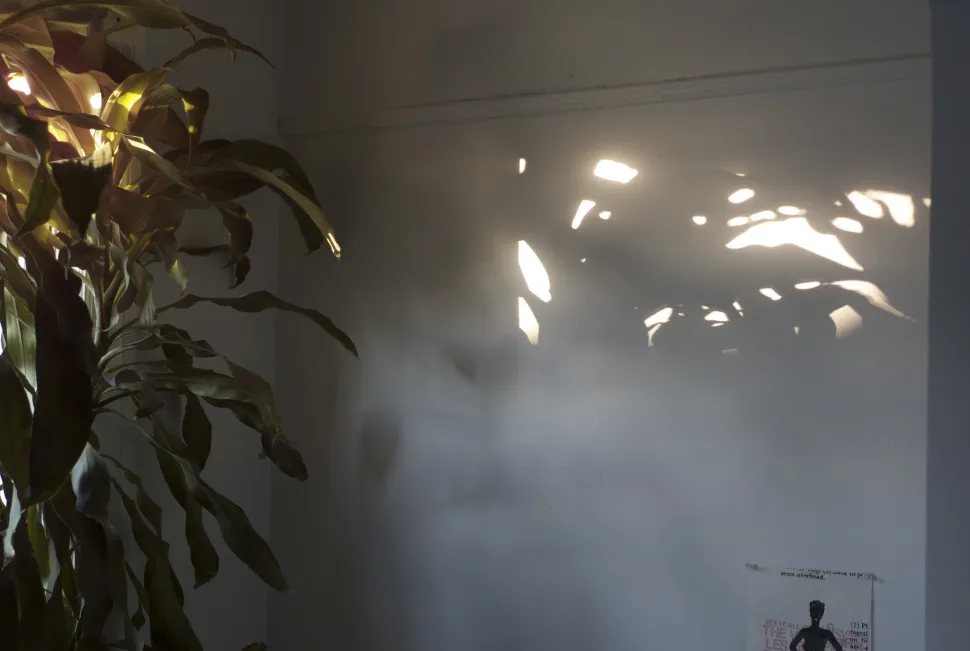
Even in a heatwave, your plants need sun - Photo by Michael Cory / Flickr
Like us, plants appreciate a cool interior. If you've taken your pots out onto the balcony, bring them inside. Aerate for at least 30 minutes in the morning, before it gets too hot. Repeat the operation in the evening, when the thermometer drops. This way, you gain a few degrees and renew the air in the room. Both actions help your plants to breathe better.
We recommend closing the shutters to protect your home from the heat during the day. If this tip works for humans, it's fatal for your collection. Plants need light, even in heatwaves. Never leave them in a dark room.
Has the foliage of your favorite Pothos turned brown? It's probably sunburned. No need to spread SPF 50 cream on it, just move it a few meters away from the window. The temperature is lower there, and the sun's rays aren't as strong, so there's no risk of burning the leaves.
Finally, if your apartment or office is air-conditioned, keep your plant away from the unit. Even in summer, cold draughts can be dangerous.
- Improving humidity
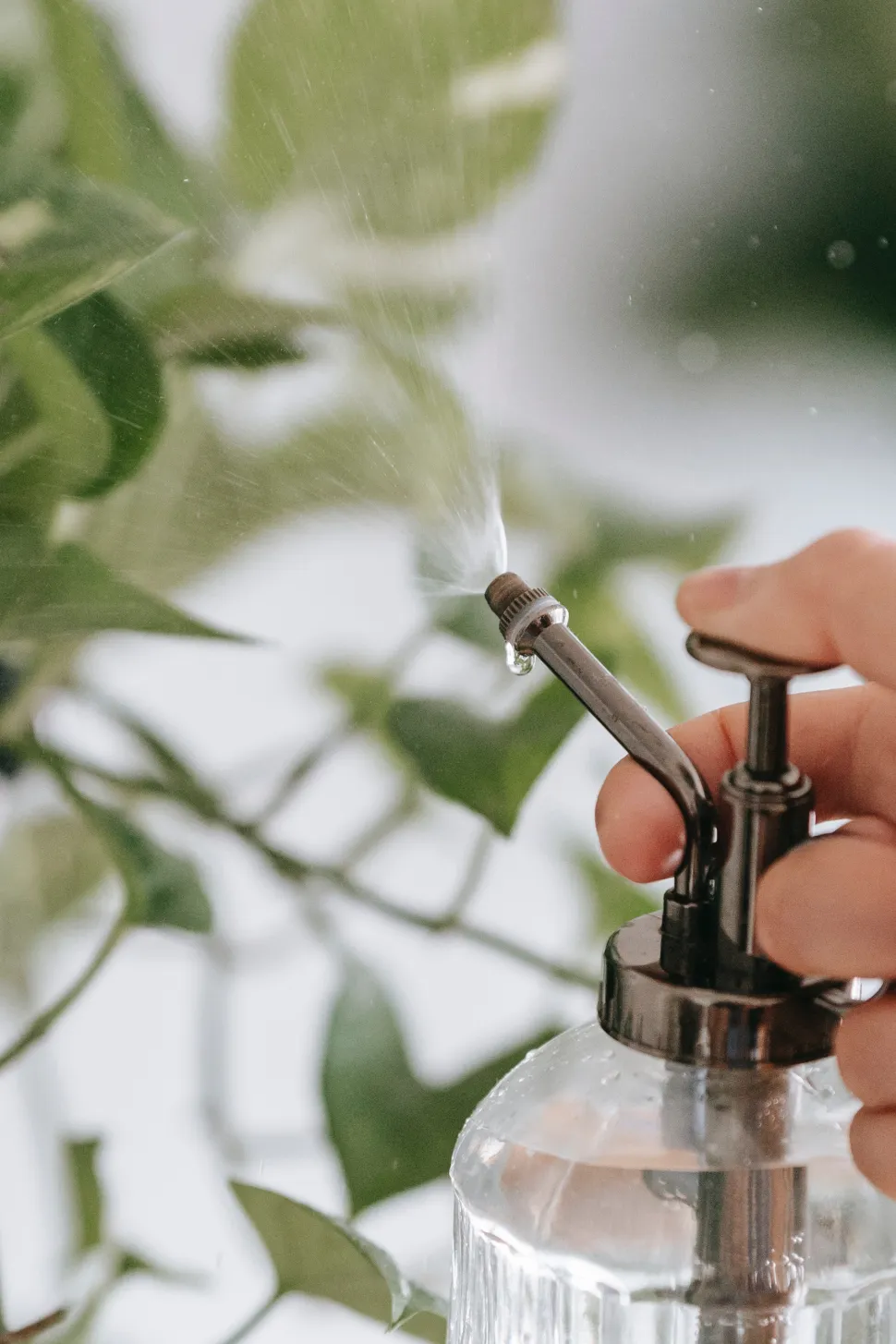
Misting helps your plants beat the heat -Photo by Teona Swift / Pexels
Winter and summer alike, drought is the enemy of houseplants. When the mercury rises, you need to redouble your efforts to maintain sufficient humidity.
Are you on the misting team? Don't abandon your trusty spray bottle and mist with room-temperature water several times a day. Spray in the morning and evening, before the heat peaks, so that the effect lasts longer. Never spray a plant in direct sunlight during the hottest hours. Because of the magnifying glass effect, the drops of water could burn the foliage.
To increase humidity throughout the day, place your pots on a dish of moist clay balls. If you have a lot of plants, place a saucer filled with water or moist clay balls alongside your pots.
My grandmother had a trick. She used to dampen tea towels and place them at the bottom of her bathtub. She would then place all her plants on top, so that they could benefit from the evaporation. Of course, her bathroom had a window!
- Adapting watering
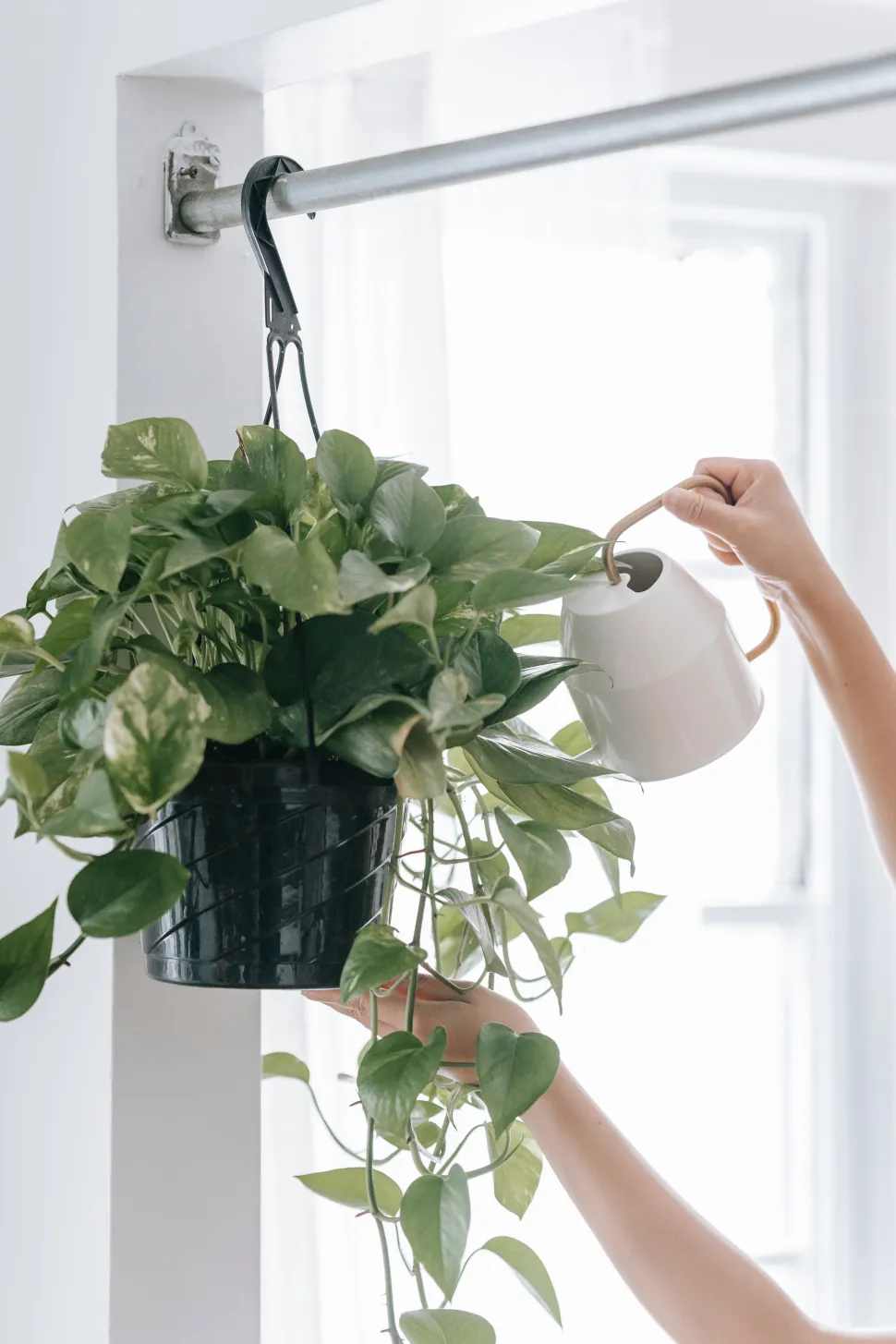
In hot weather, plants need to be watered more frequently - Phot by Teona Swift / Pexels
In summer, plants require more frequent watering. But be careful not to water too often. Even in the middle of a heatwave, you could drown the roots. Make sure the substrate is dry before adding water. But don't wait for the soil to harden before taking action!
Whether indoors or in the garden, it's best to water early in the morning or late in the evening, when it's cooler and water evaporates less quickly. If you receive watering reminders from the Monstera app, you can customize the time at which the notifications are sent.
Finally, stick to good old-fashioned methods of caring for your houseplants in hot weather. Continue to use room-temperature water. Cold, or worse, icy water causes water shock, which can kill roots.
How to save a plant that's had a heat stroke?
You've been away on vacation for a few days, and the stems of your Alocasia zebrina have turned yellow while you've been away? Have you left your Peperomia Watermelon behind the bay window and all its leaves have turned brown? All is not lost.
Assess the damage before intervening. If there's still some green, soft leaves and stems, then there's hope. Using a clean pair of scissors or pruning shears,cut away wilted flowers, leaves and dead branches. Start on the outside of the plant to get closer to the heart. As soon as you see a sign of life, stop pruning.
Then inspect the soil. Is the soil dry? You need to rehydrate the root ball. Simple watering is not enough. We advise you to use a "bassinage". Immerse the pot in a larger container filled with water at room temperature. Wait a few minutes for the air bubbles to disappear, then remove the plant. Let it drain before placing it back in its pot.
Give your protégée a few weeks to recover. Place the plant in semi-shade, mist its foliage regularly, stop adding fertilizer and resume watering once the soil has dried on the surface.
You'll need to wait a few weeks before you know whether the rescue has worked. When new shoots appear, it's a sign that your mission has been a success! You can then resume normal maintenance.
By Servane Nemetz
on 13-07-2023 at 08h43
on 13-07-2023 at 08h43



